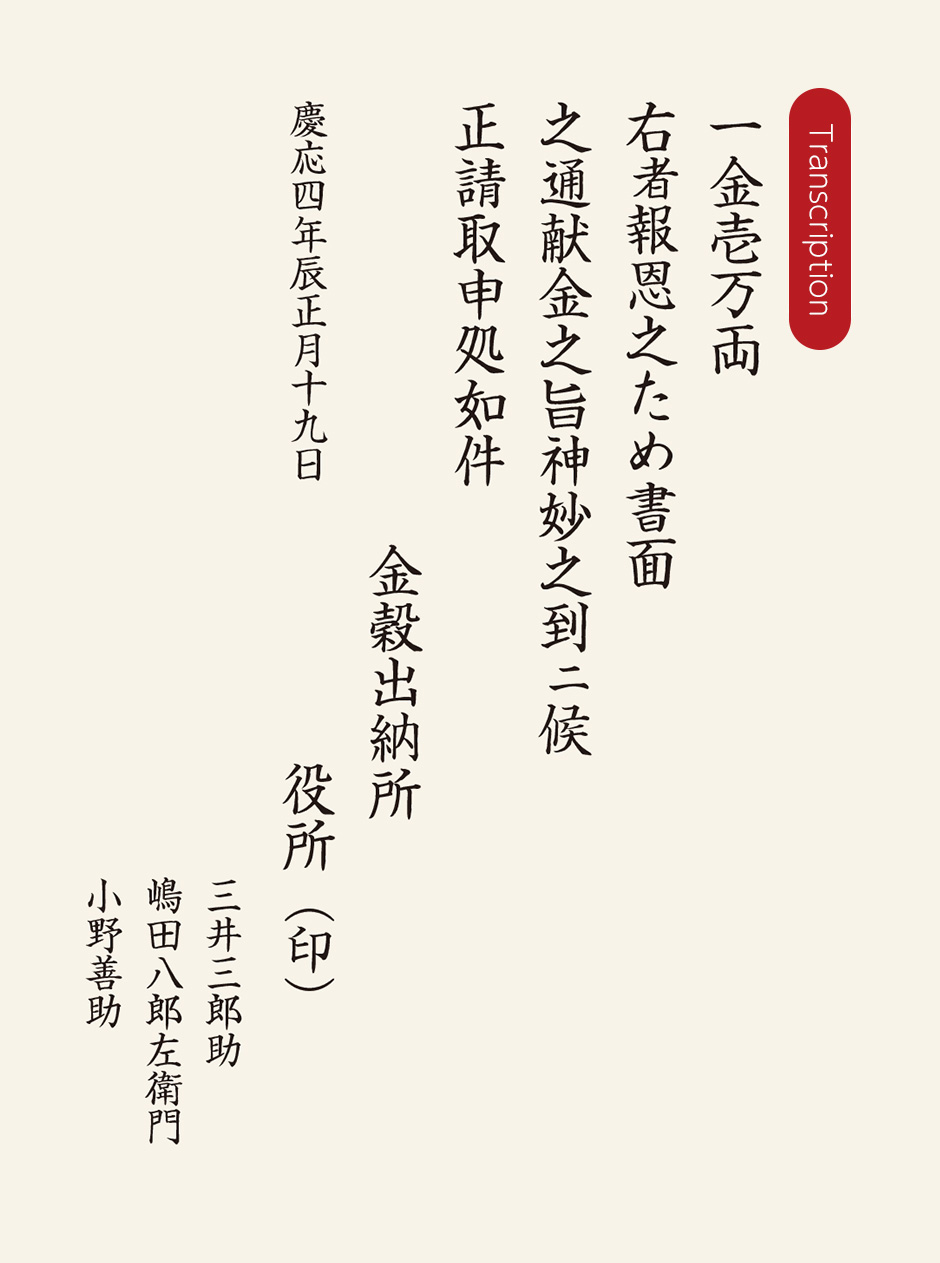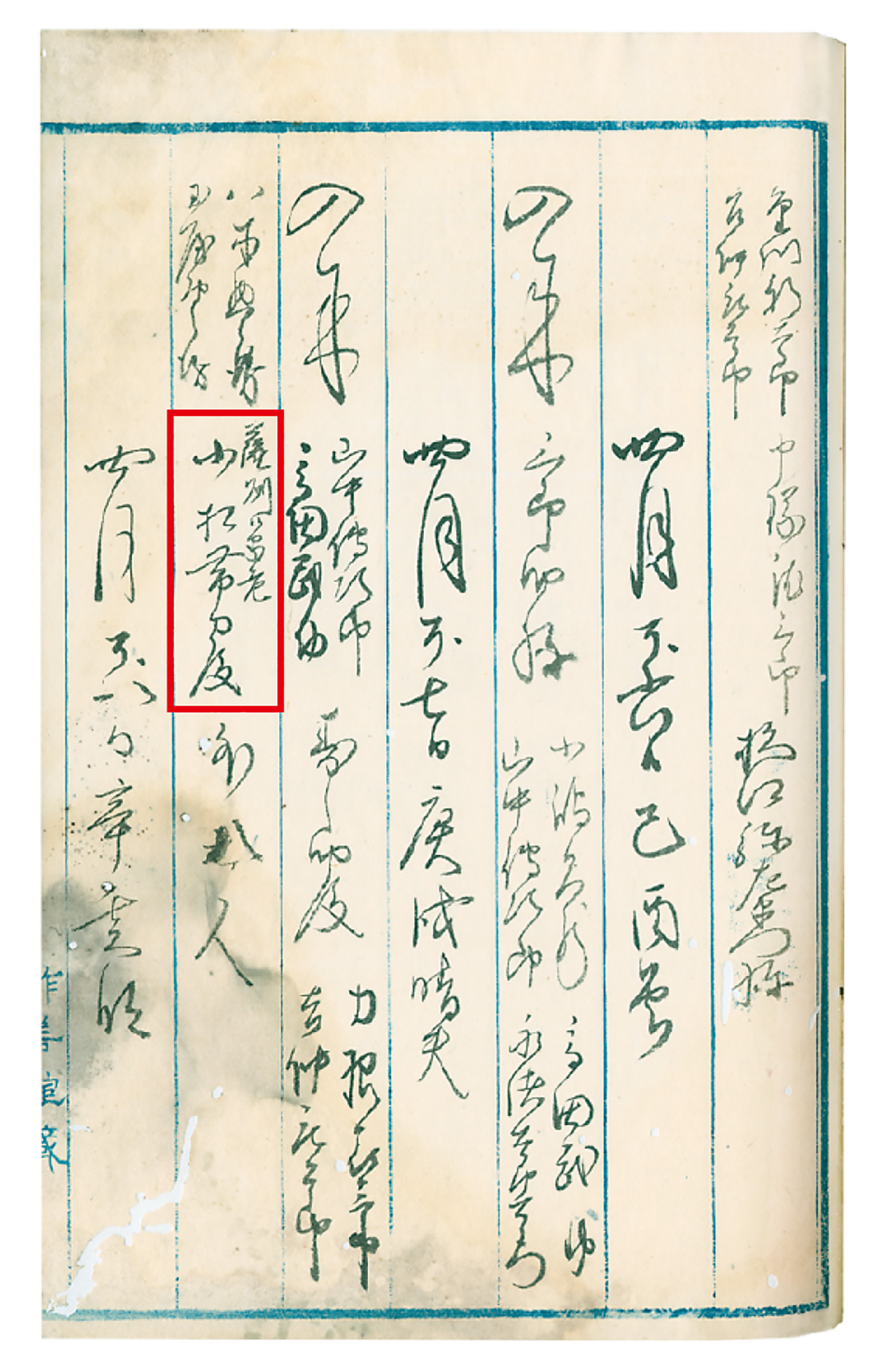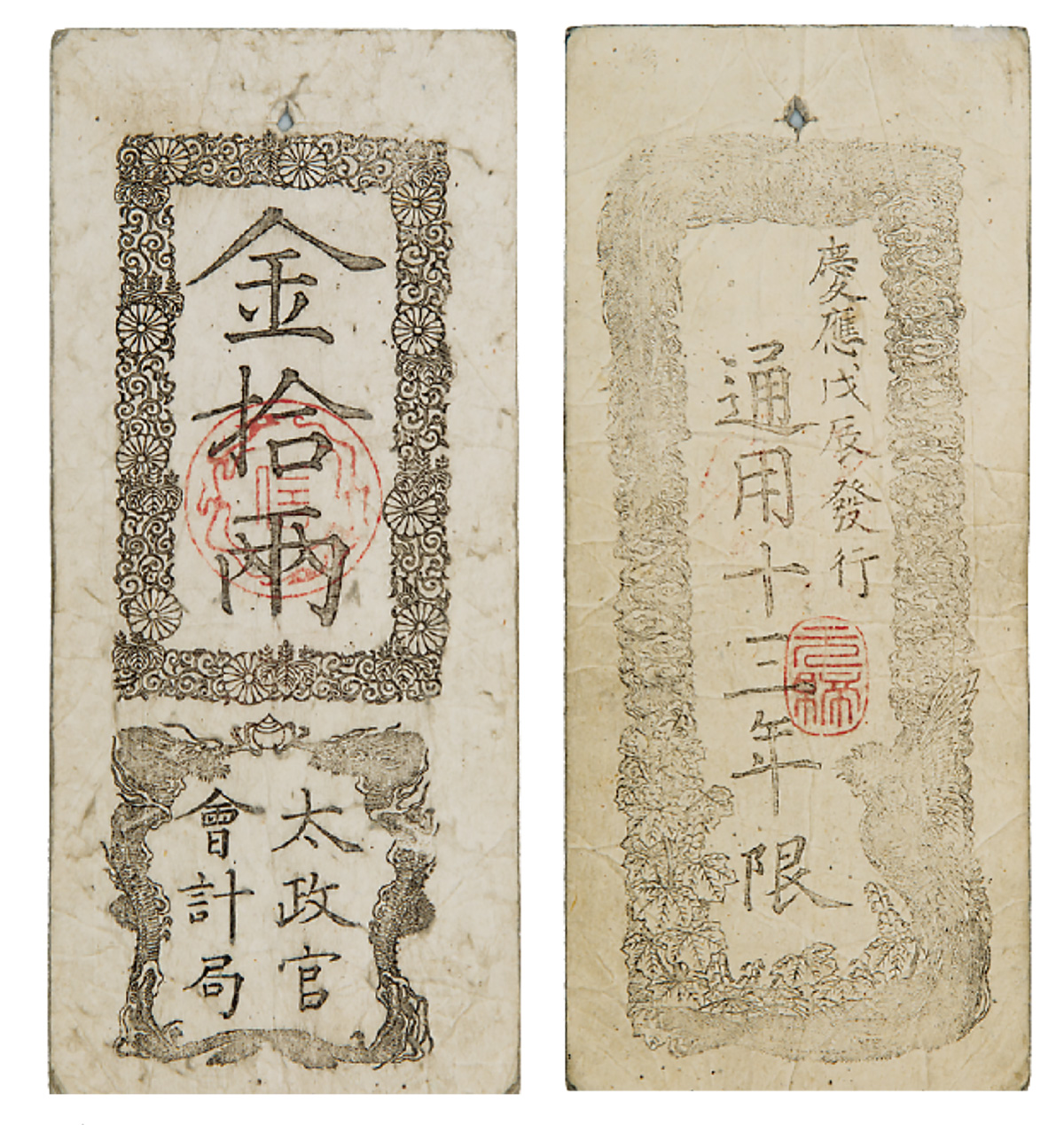23 Supporting the New Government
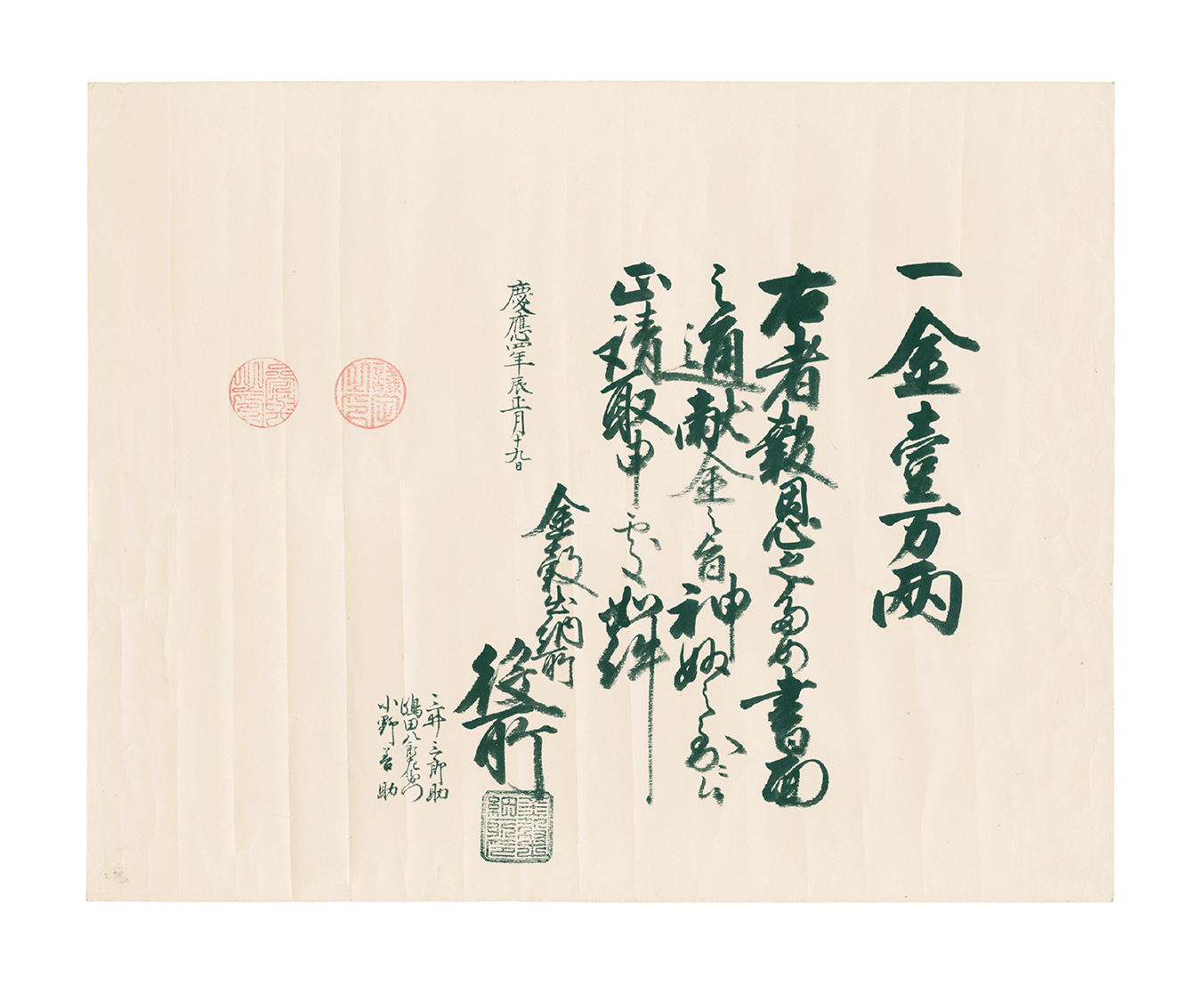
Approach to Satsuma
Right through the waning days and final collapse of the shogunate, Mitsui continued to provide services to it from its shops in Edo and Yokohama, including handling transactions involving public funds. At the same time, it was building a relationship with Kyushu’s anti-shogunate Satsuma domain.
In 1865, Mitsui became a chartered purveyor of services to the Satsuma domain. The occasion for this was Mitsui’s agreement to handle exchange services for the domain’s coinage (Ryukyu Tsuho) in the Big Three cities. In April 1867 (dates hereinafter according to the lunar calendar), while Shimazu Hisamitsu was visiting Kyoto, eight senior Satsuma domain officials, including Komatsu Tatewaki, visited the residence of Mitsui Takaaki (→Fig. 23b). The purpose of the visit was ostensibly to view works of art, but it is considered likely that confidential issues were also discussed.
In the winter of 1867, at Satsuma’s request, Mitsui raised 1,000 ryo of funds for military operations. Mitsui was itself in financial straits, but met Satsuma’s request by borrowing money from every major exchange house in Kyoto. Even while maintaining close links to the shogunate during its last days, Mitsui was also working with the Satsuma domain.
Early Help for the Meiji Government
With the issuance of the Great Proclamation of the Restoration of Imperial Rule that was issued by the Meiji Emperor in December 1867, the new government came into power and established the Kinkoku Suitosho, a government entity charged with formulating and implementing financial policy. This entity was the forerunner of the future Ministry of Finance. Its first task was to extract funds from wealthy merchants, temples and shrines throughout Kyoto, and it called on businesses, including Mitsui, for contributions. On the last day of December 1867, Mitsui contributed 1,000 ryo. On January 19, 1868 (the last year of the Keio Era and the first year of the Meiji Era), the Mitsui, Ono, and Shimada families jointly contributed 10,000 ryo (→Fig. 23a). Mitsui had to turn to reserves in the vault of its Kyoto exchange store in order to make its contribution. It is said that these funds were used by the new government in its war with the shogunate. Mitsui, Ono, and Shimada together became known as the three exchange families, serving the new government by managing the collection and disbursement of government funds. Moreover, they were ordered to assist in the war against the shogunate, in part by raising funds and securing rice for the Tosando Army marching on Edo. Mitsui assigned its own personnel to accompany and assist the Army during its march.
Mitsui and the Dajokan Banknote
From the beginning, the new government found itself short of funds, including funds to promote industrial development. Consequently, the government launched its first paper currency, the Dajokan banknote (→Fig. 23c) in May 1868. But the new government’s authority was still weak, and it lacked the power to enforce the use of its currency. Moreover, trust in the new notes was low; circulation was limited to the Kyoto-Osaka region, and their value declined rapidly.
In August of that year, with the announcement that the emperor would visit Tokyo, the three exchange families of Mitsui, Ono, and Shimada were ordered to handle financial arrangements for the journey, including the procurement of any needed funds. Mitsui Takaaki, head of the Mitsui family, chose to follow the imperial carriage himself. To promote the circulation of its new currency, the government used it to pay costs incurred during the journey, which totaled more than 116,700 ryo. In this way, Mitsui built financial ties with the new government at the dawn of the Meiji Era.

This new government ministry was responsible for financial policy, later becoming the Ministry of Finance. On January 19, 1868, in response to a request from the Kinkoku Suitosho, Mitsui joined the Shimada and Ono families, which ran major Kyoto money exchange houses, to donate a total of 10,000 ryo to the new government. Pictured above is the receipt for these funds issued by the Kinkoku Suitosho. This imposing document is impressive not only for its size (65 cm wide, 53 cm tall) and the size of the main text, but also for the tiny inscriptions recording the names of the contributors: Mitsui, Shimada, and Ono.
Translation
It pleases (the new government) highly to affirm that a contribution (of 10,000 ryo) has been made, and that the stated amount has been received.
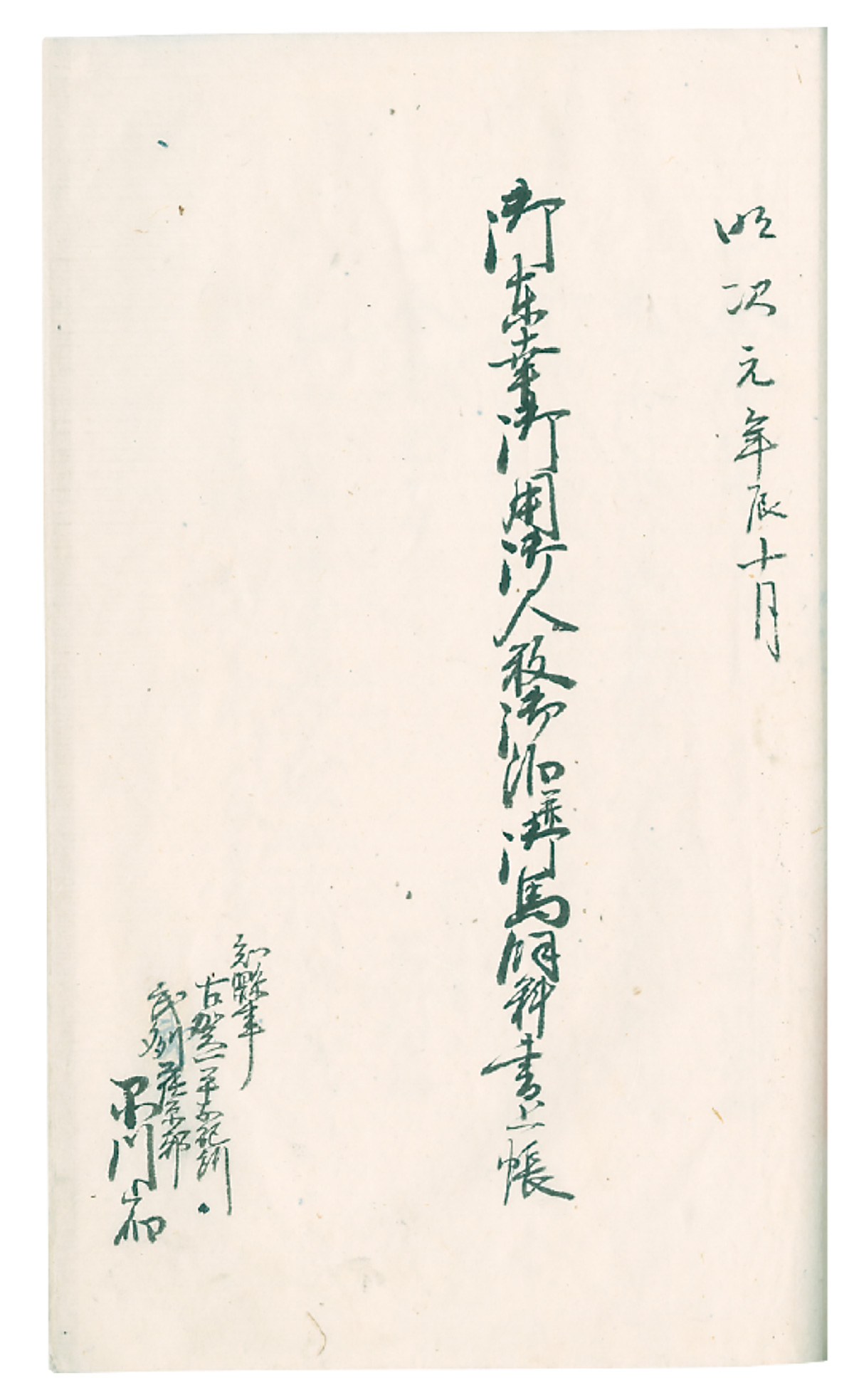
As the emperor and his entourage journeyed from Kyoto to Tokyo, records were kept of the number of people accommodated at each inn along the way, their accommodation costs, the number of accompanying horses, and the cost of feed. The document shown is for the inn at Shinagawa, where the entourage stopped for the night before proceeding on to Tokyo. Persons accommodated totaled 2,552, while horses numbered 38. The total accommodation cost for that night was 657 ryo.

